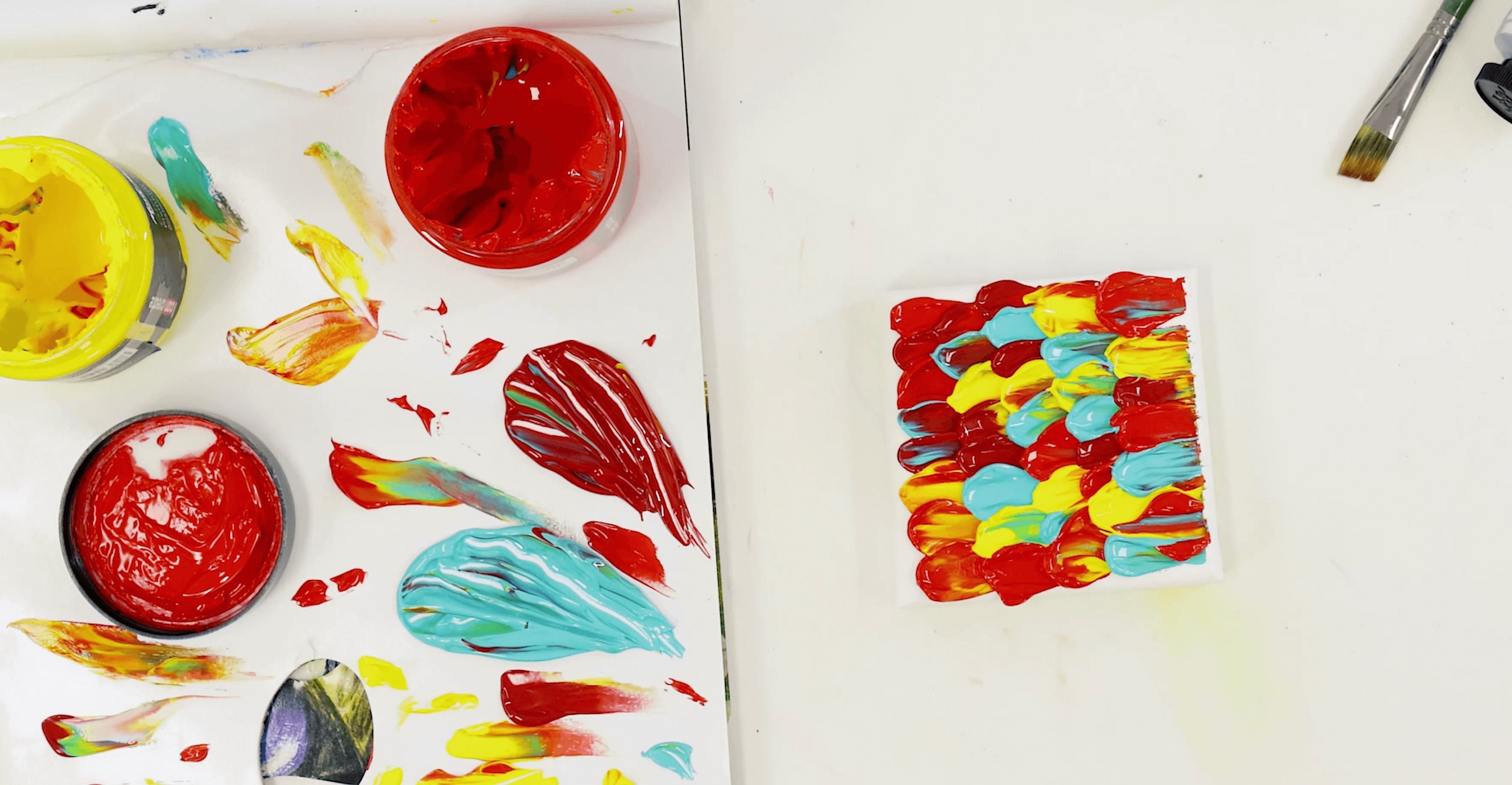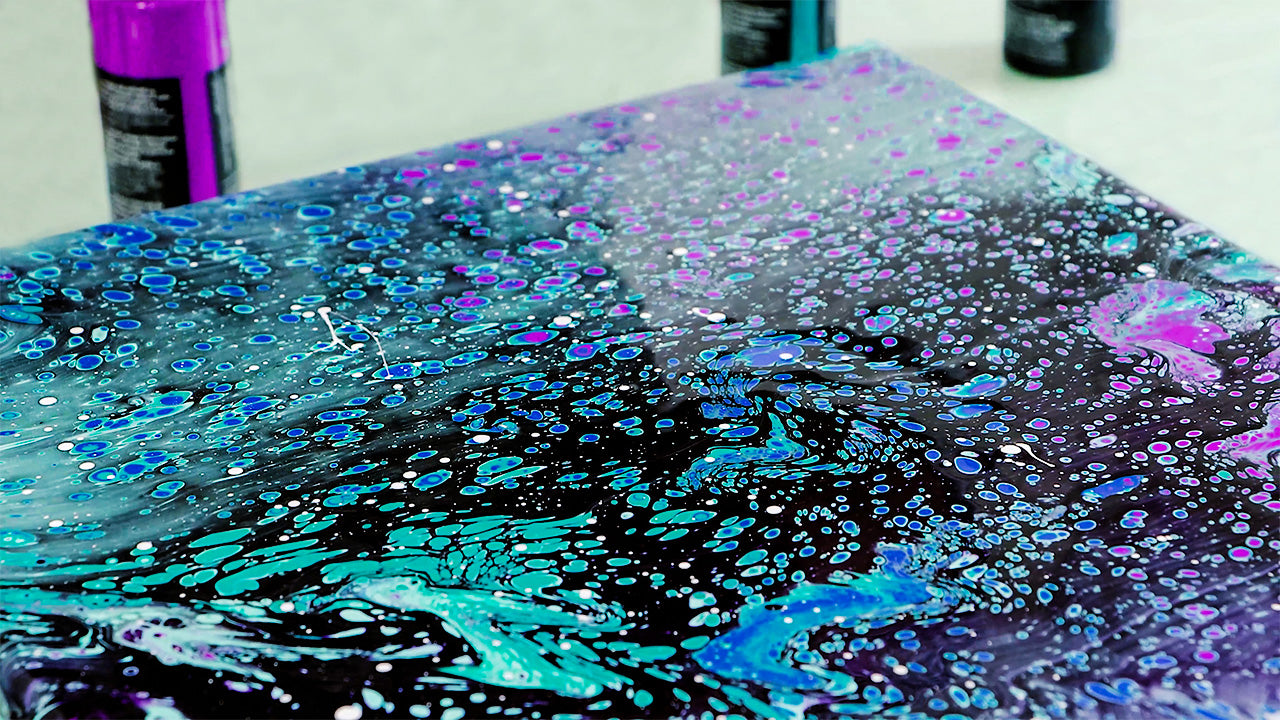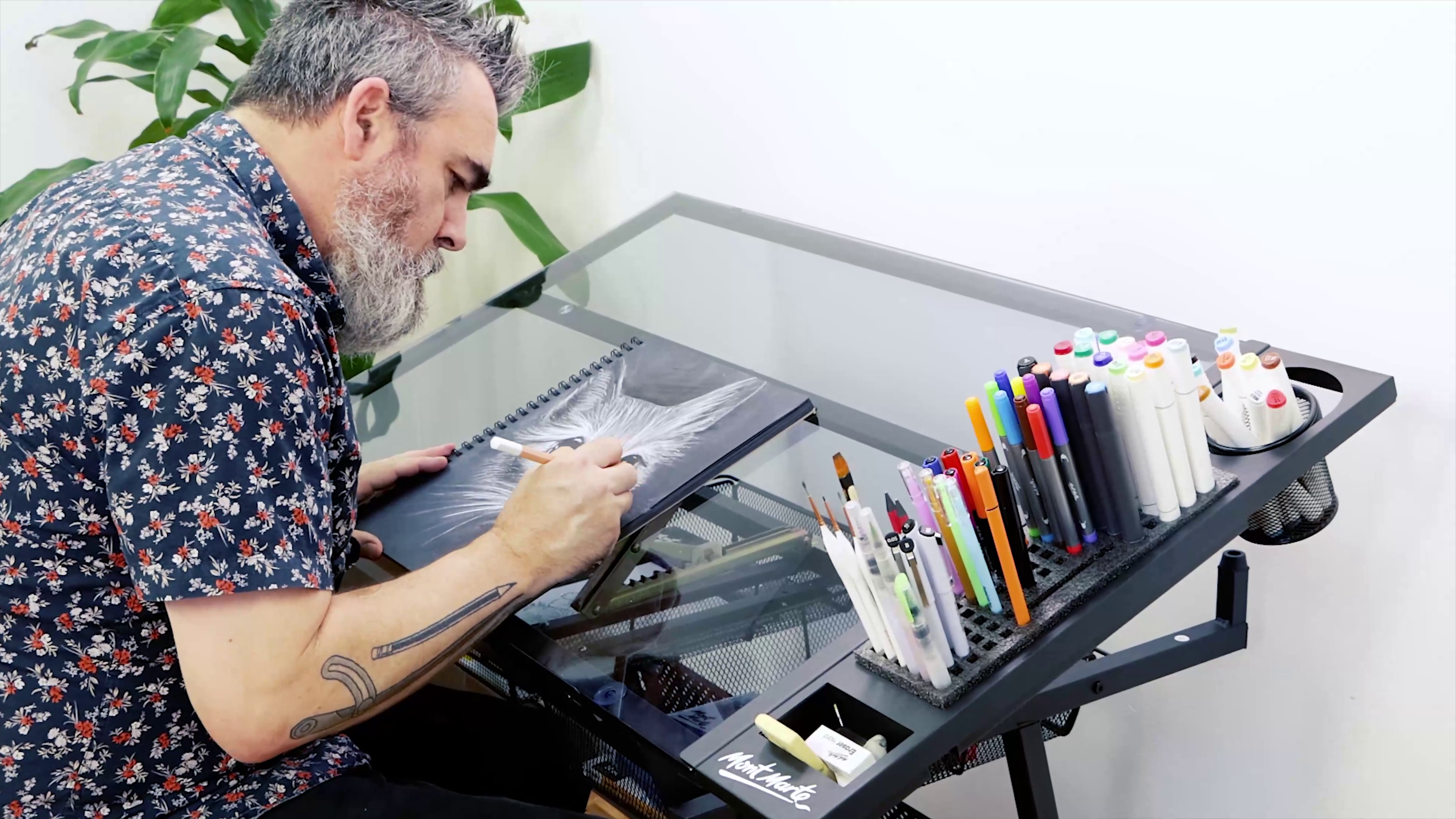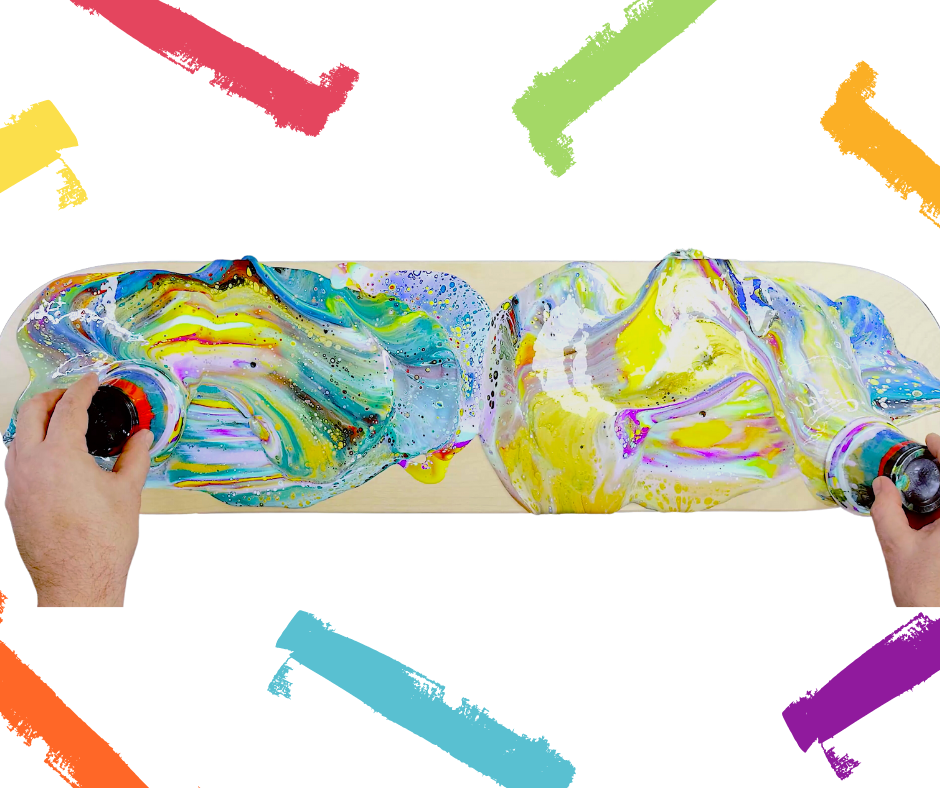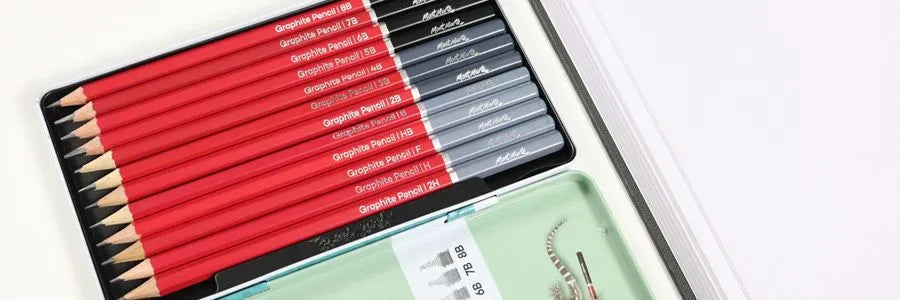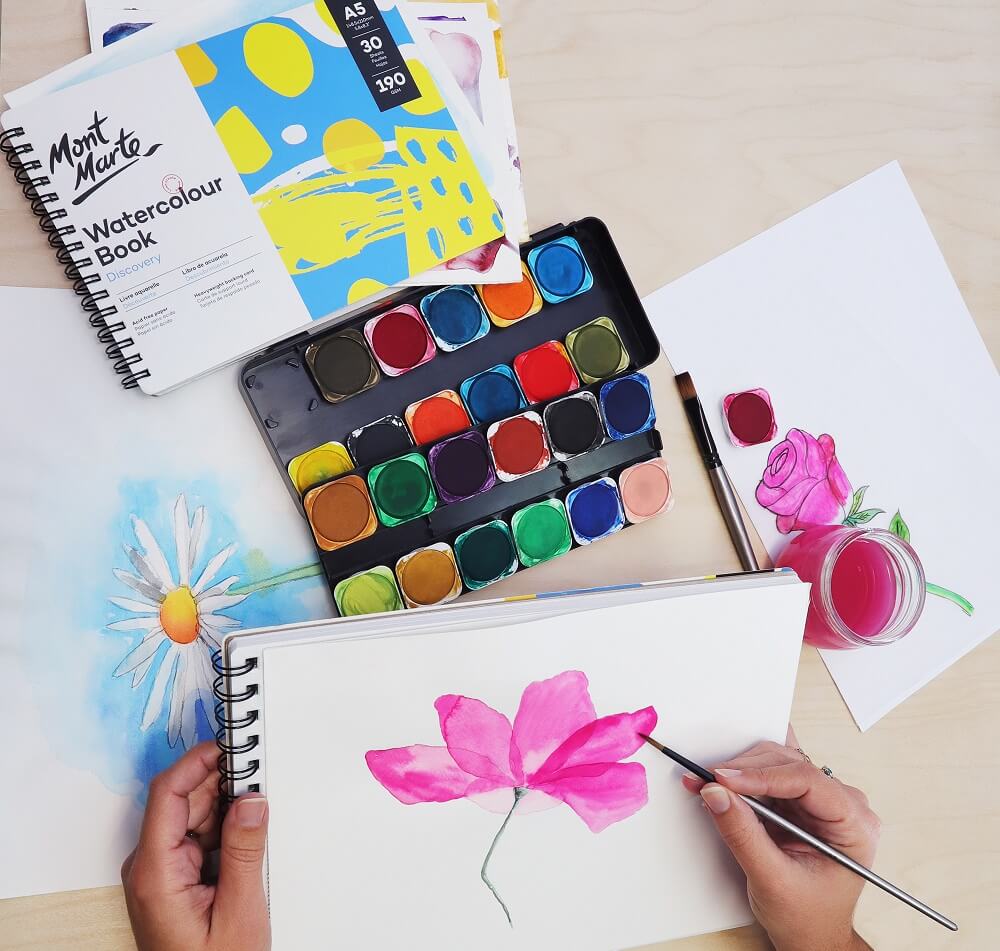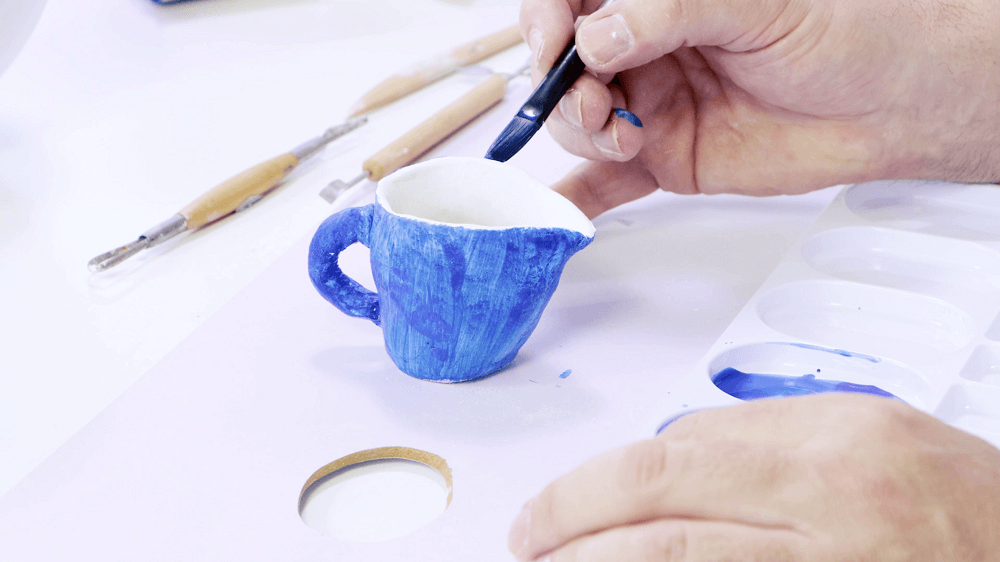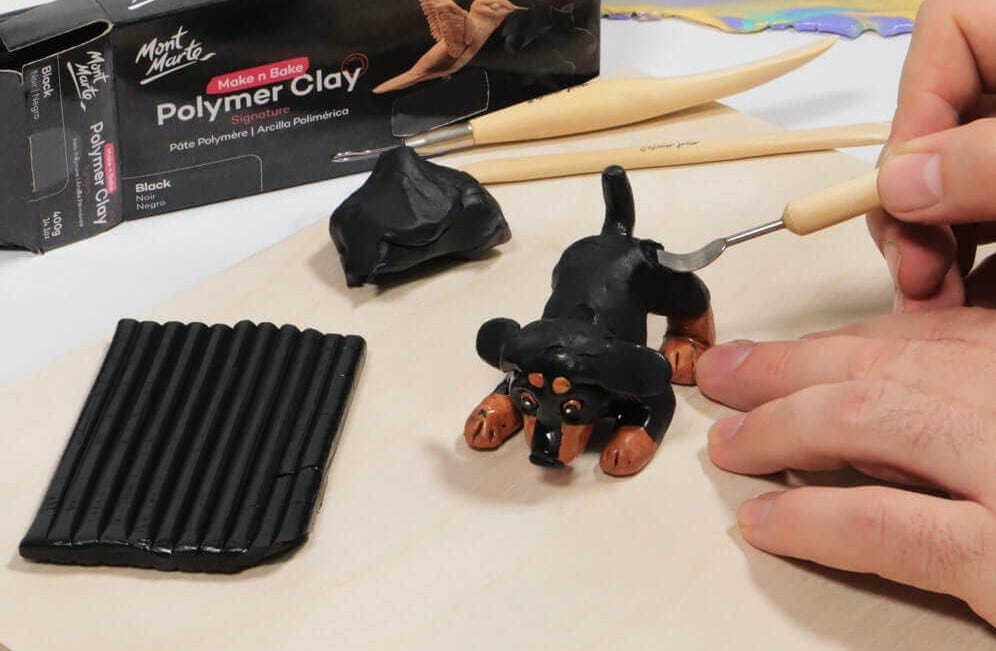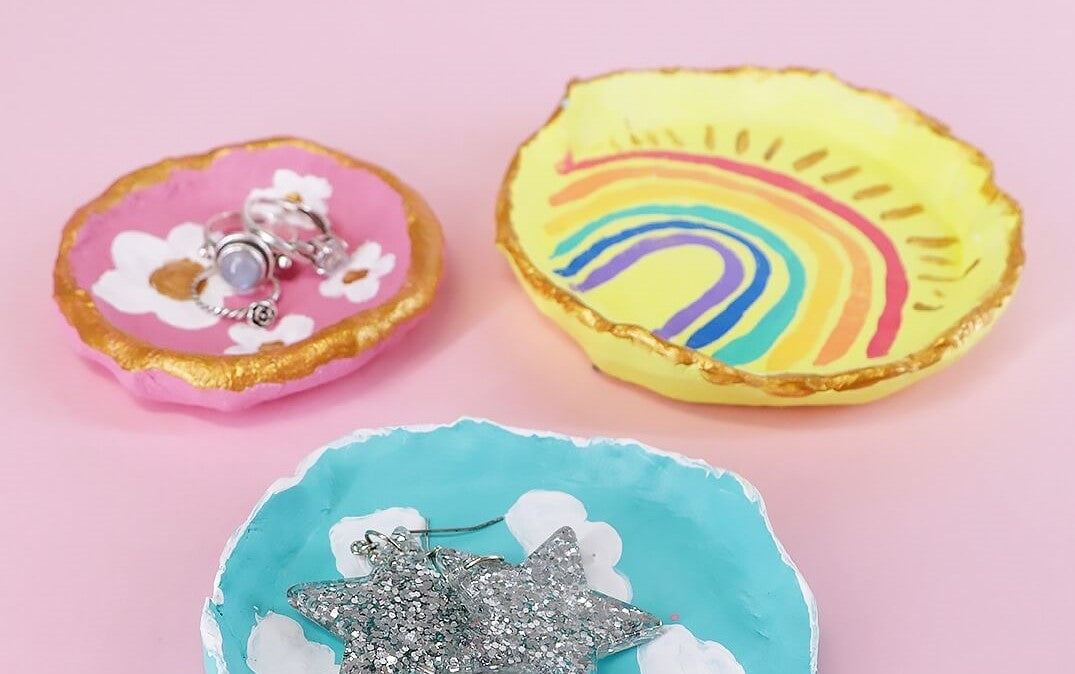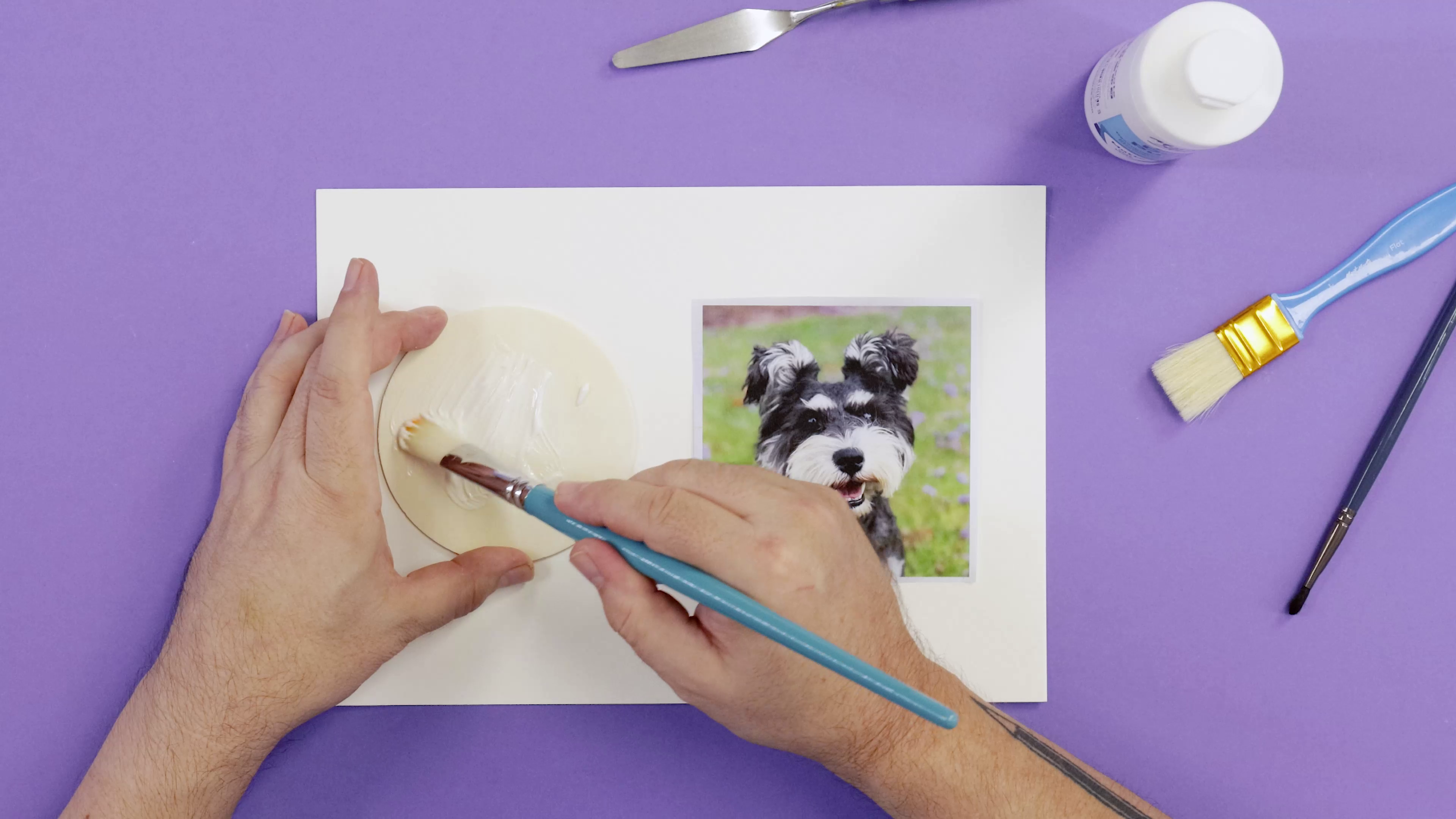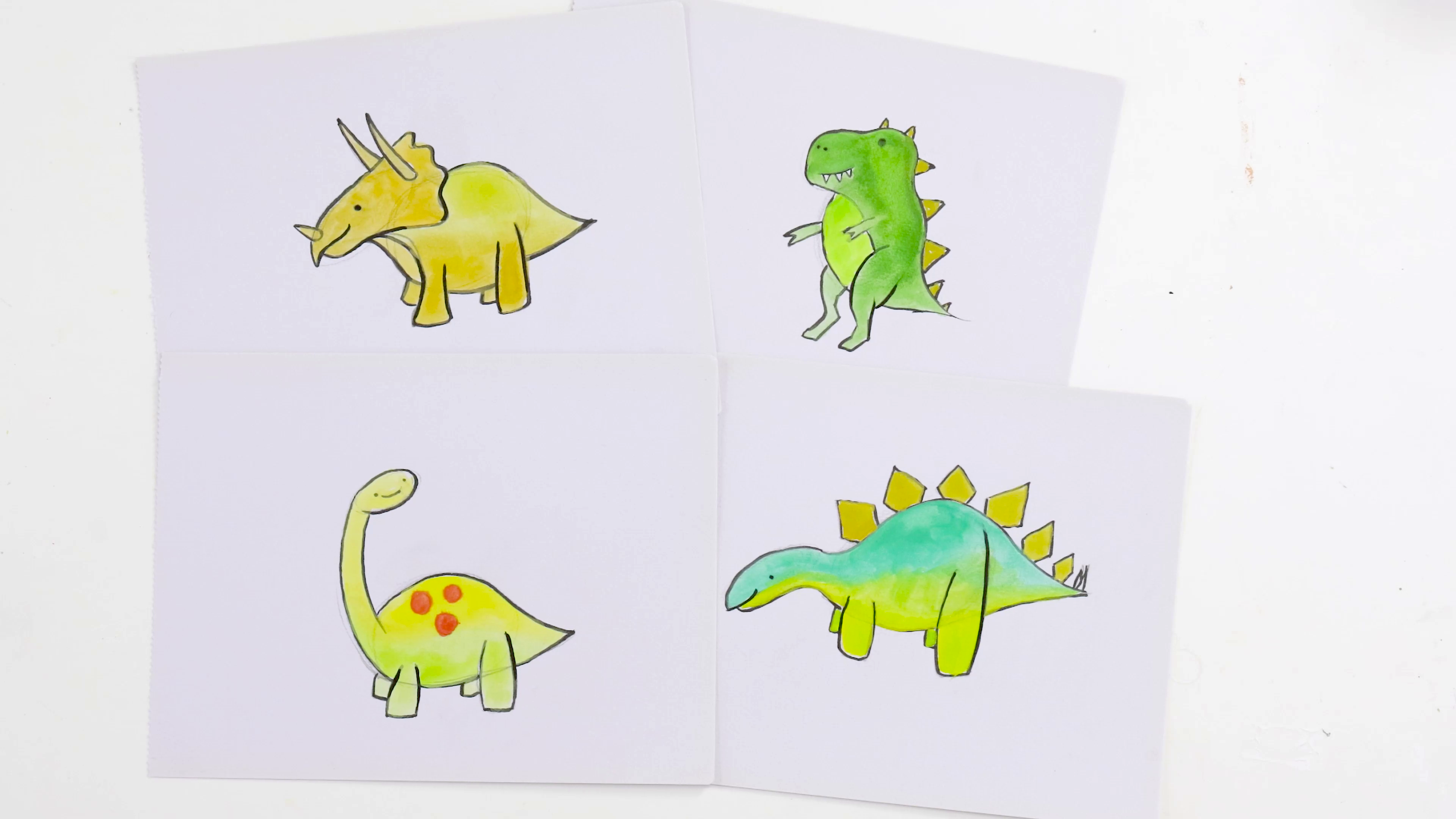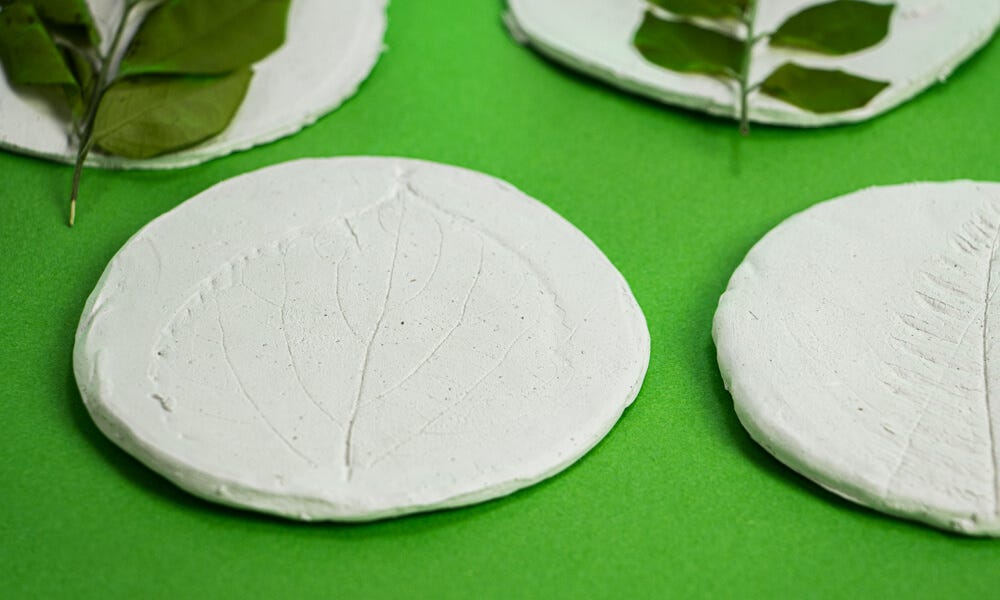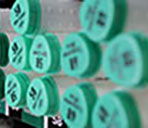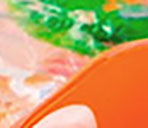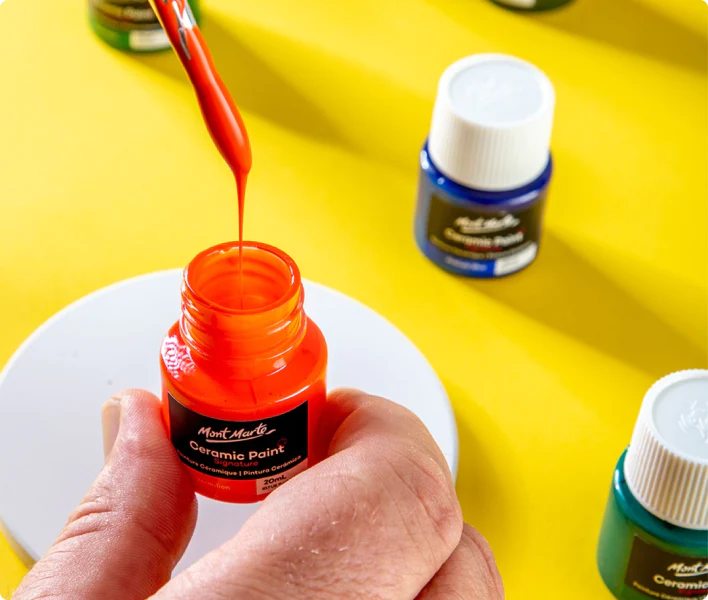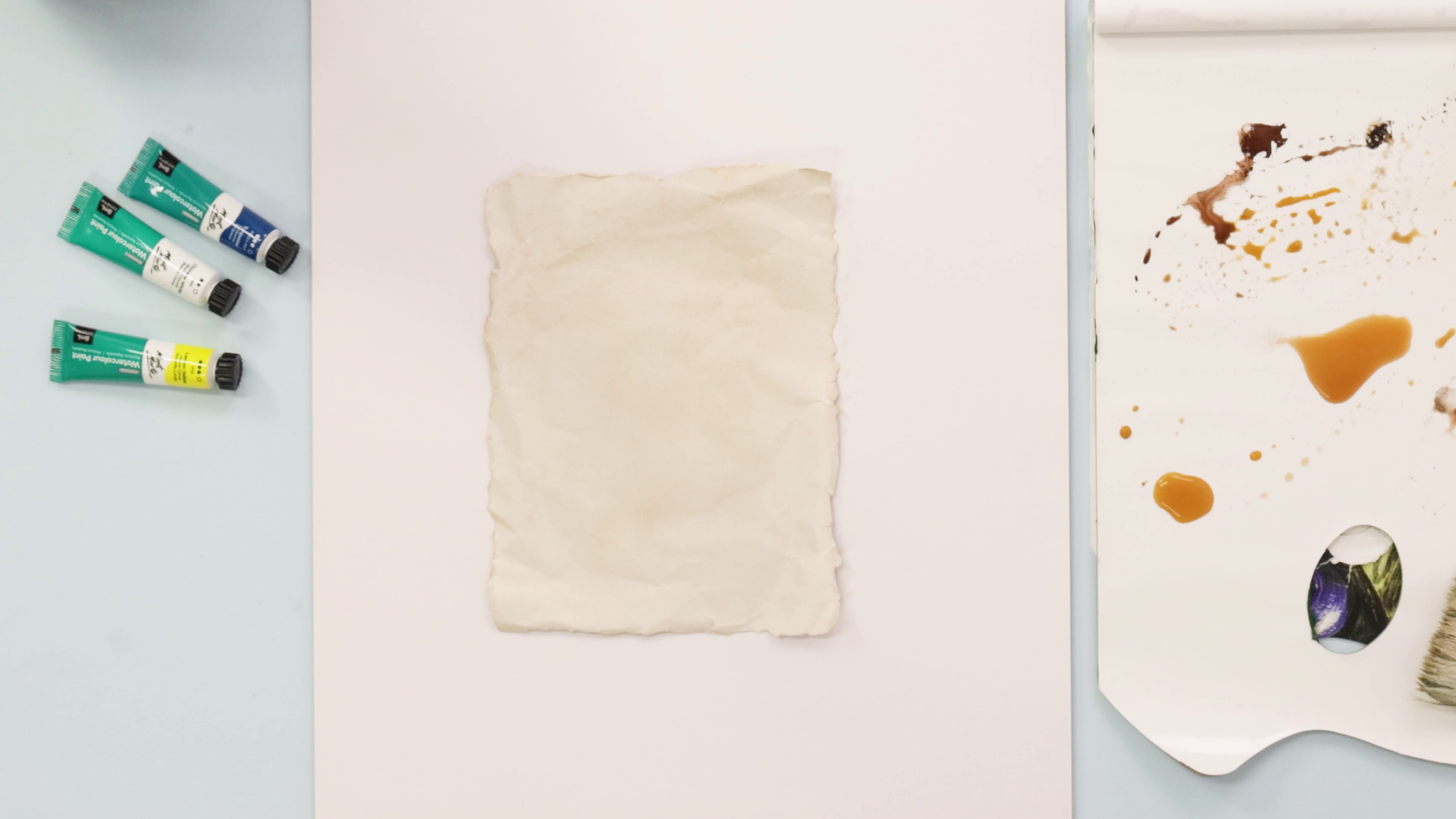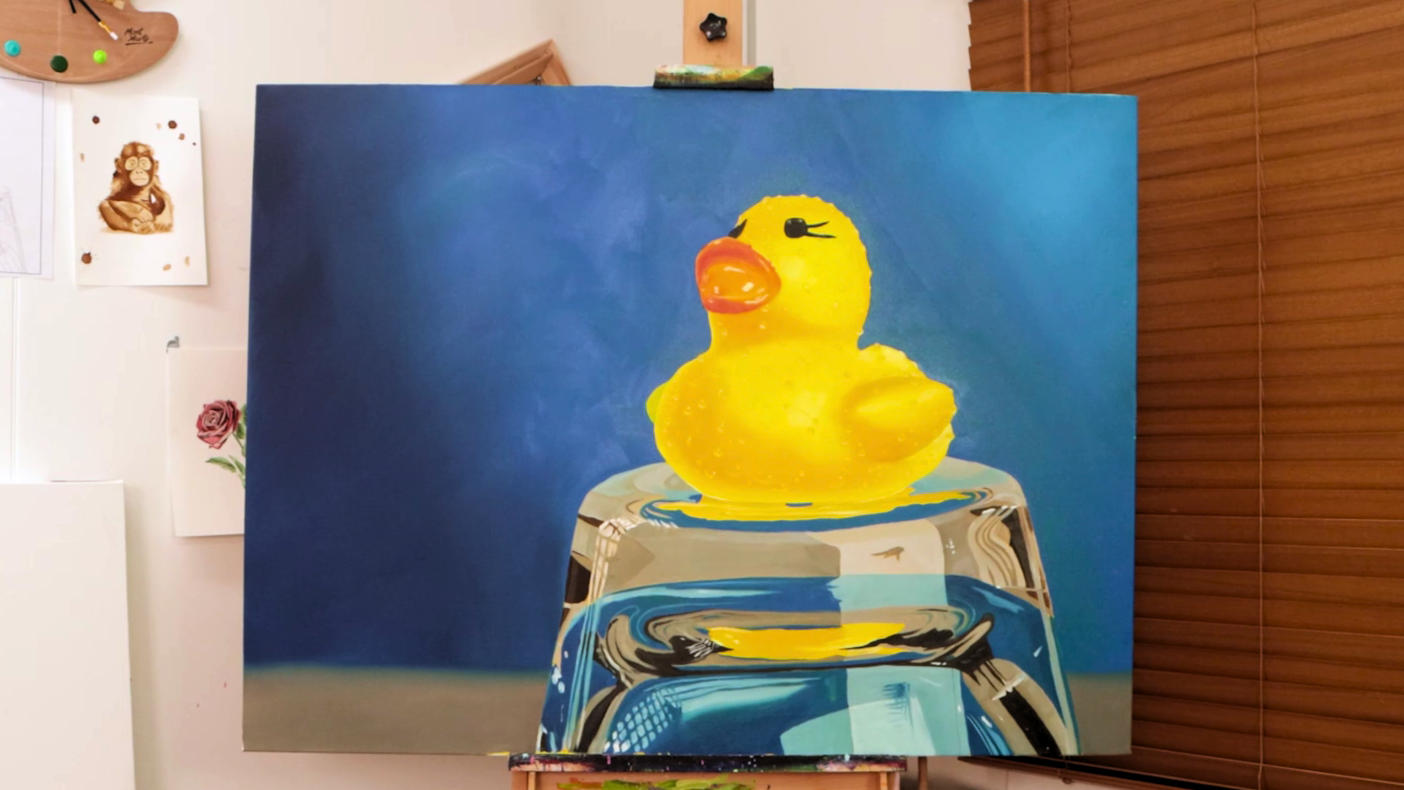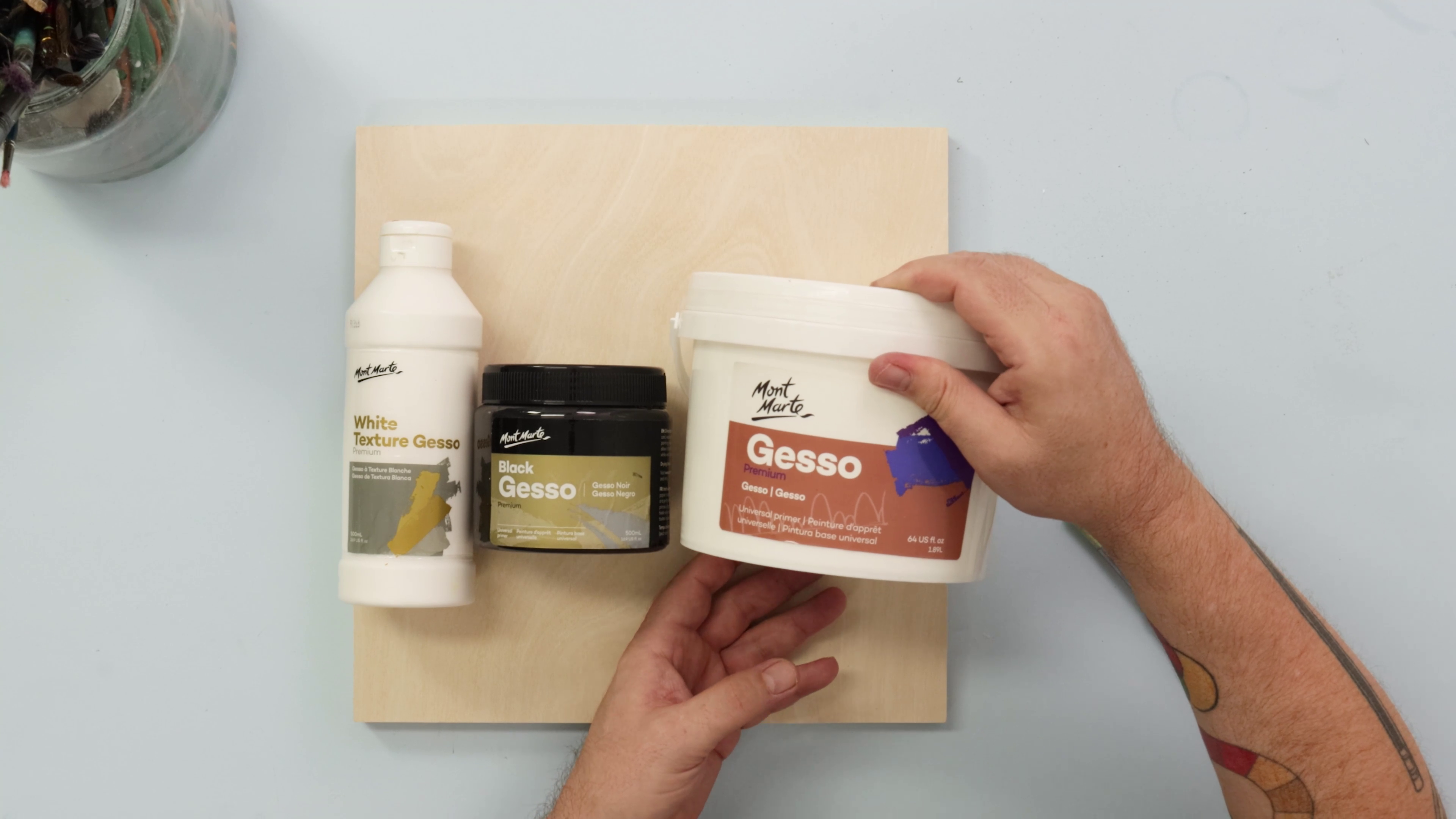Paint realistic orchids in acrylic
In this lesson we create a realistic still life of white orchids with acrylic paint. An intense background is suggested with pearl sapphire tone paint, glazed with phthalo blue and then scumbled with a translucent lamp black smoke resulting in a shimmering surface that appears to glow. We tackle techniques in this lesson that emulate the look of oil paint, and we also go through rendering tips to enable you to suggest the subtle tones within the soft thin petals.
Step 1. Painting the Background.
The first step is to create a deep rich background. To do this follow the steps below:
a) Paint the canvas with a coat of Dimension Acrylic Pearl Sapphire. Let this dry.
b) Create a mix from 1 part Phthalo Blue ( Satin Acrylic) to 4 parts Gloss Medium. Mix it thoroughly and paint a thin coat over the Pearl Sapphire coat.
c) Create a mix from 1 Part Lamp Black to 10 parts Acrylic Retarder. Mix thoroughly and lay it into the top right hand corner of the canvas and using big flowing strokes bring the paint down the canvas in a dry brush action thinning out the amount of paint on the surface as you go. Let this dry thoroughly.
Flip the canvas so that the dark part of the canvas lies at the bottom.
Step 2. Transferring the drawing.
Refer to the outline image on page 7, and transfer the line work as accurately as you can with a White Charcoal Pencil. If you don’t feel confident enough to draw it up directly you might like to use the grid system and transfer it like that. Whatever method you use, don’t start painting until you are happy with the transferred drawing.
Step 3. Painting the Flowers.
The flowers of the Orchid are the star of the painting, and although they are of a white base, there are, in fact many differing hues in each petal. For this reason it is important to refer to the supplied image in this PDF to familiarise yourself with the colour changes. Each petal has a different shape and tonal value due to the aspect of it and whether it is in shadow or not. Bearing in mind the difference between each petal, below is the general order of rendering. Additional tones can be added in Step c). Work on a petal by petal basis.
So first lay out all of the colours outlined in the materials list on to an easy clean palette, then follow these steps;
a) Paint the petal Neutral Grey (Dimension). Let this coat dry.
b) Paint petal Zinc White ( Satin series). Following step (c) to be done whilst this coat is still wet.
c) Paint a grey mixed from Paynes Grey and Zinc White into the Zinc White of the petal in the appropriate parts. Paint wet in wet so the transitions are smooth.
d) Scrub any colours over the petal. Ensure you mix water with paint so it is not too opaque.
e) Paint a thin layer of Zinc White over the petal. Ensure the underlying colour can be seen to an extent.
f) Paint Titanium White over the petal only in the areas of highlight. Be careful not to cover too much of the petal with this strong colour or all the underlying colour will be obliterated.
Painting the Stamen.
a) Paint the edge of the stamen Lemon Yellow.
b) Paint the centre of the stamen Medium Yellow.
c) Add the stripes and details with a mix of Rose Madder and Permanent Red.
Step 4. Painting the stems and buds.
The stems and buds, like the flowers, need to have a Neutral Grey Base laid down first. Let this coat dry. Next create a mix of Paynes Grey and Van Dyke Brown and paint the stems and buds with this dark tone. Paint the topside of the stems and buds with a mix of Raw Umber and Zinc White. This will suggest a highlight. Paint a mix of Sap Green with Lemon Yellow onto the highlight areas of each bud. Scumble some Raw umber into the shadow areas under the buds. Remember they need to look spherical. The final step is to add the highlights with Zinc White.
Step 5. Painting the leaves
The last element is the leaves. In this case we don’t need to mask off the blue background with a grey, instead we just lay some Sap Green over the leaf area. This will be a mid tone and Light Green and Dark Green can be added onto the top. I have dry brushed out the bottom of the lowest leaf to suggest a sort of lost edge so that the orchids don’t seem like they are floating. Let this coat dry. Next lay some Hookers Green into the areas of shadow. Create a mix from 1 part Sap Green to 1 part Lemon Yellow and paint this into the areas of highlight. Finally add some Titanium White onto the edges of the leaves in certain parts. Refer to the last image in the PDF to see where these lie.
Material List
- Dimension Acrylic Premium 75ml (2.5 US fl.oz) Tube - Rose Madder
- Dimension Acrylic Premium 75ml (2.5 US fl.oz) Tube - Lemon Yellow
- Dimension Acrylic Premium 75ml (2.5 US fl.oz) Tube - Medium Yellow
- Dimension Acrylic Premium 75ml (2.5 US fl.oz) Tube - Zinc White
- Dimension Acrylic Premium 75ml (2.5 US fl.oz) Tube - Paynes Grey
- Dimension Acrylic Premium 75ml (2.5 US fl.oz) Tube - Titanium White
- Dimension Acrylic Premium 75ml (2.5 US fl.oz) Tube - Lamp Black
- Acrylic Medium Premium - Gloss 135ml (4.6oz)
- Plastic Brush Washer Signature
- Taklon Brush Set in Wallet Signature 11pce - Acrylic
- Artist Acrylic Brush Premium Taklon Flat Wide 25mm
- Dimension Acrylic Premium 75ml (2.5 US fl.oz) Tube - Raw Umber
- Dimension Acrylic Premium 75ml (2.5 US fl.oz) Tube - Sap Green
- Dimension Acrylic Premium 75ml (2.5 US fl.oz) Tube - Ultramarine Blue
- Double Thick Canvas Premium 91.4 x 121.8cm (36 x 48in)
- Dimension Acrylic Premium 75ml (2.5 US fl.oz) Tube - Pearl Sapphire
- White Charcoal Pencils Lge Hex Signature 2pc
- Acrylic Retarder Premium 75ml (2.5 us fl.oz)


